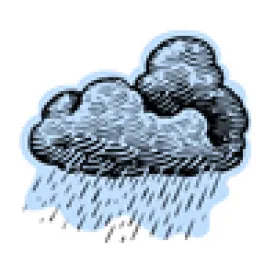Some violators of federal industrial stormwater requirements will likely pay significantly higher penalties under new guidance issued by U.S. EPA. The new guidance, “Supplemental Guidance to the 1995 Interim Clean Water Act Settlement Penalty Policy for Violations of the Industrial Stormwater Requirements” (the 2016 Supplemental Guidance), provides agency staff with guidance on how to calculate a minimum settlement penalty for unauthorized discharges of industrial stormwater, violations of EPA or state-issued NPDES industrial stormwater permits, and other violations of Clean Water Act stormwater requirements applicable to industrial activity. The 2016 Supplemental Guidance sets forth a more sophisticated and detailed approach to calculating settlement penalties as compared to the 1995 Interim Policy. While the effects of the new guidance are not entirely clear, it is likely that it will result in higher penalties for larger and more sophisticated companies compared to smaller companies for the same violations.
Under the 1995 Interim Clean Water Act Settlement Penalty Policy, the equation for calculating a settlement penalty was:

While the 2016 Supplemental Guidance does not change this equation, it focuses on calculations for four of the six elements of the equation: Economic Benefit, Gravity, Gravity Adjustment Factors, and Litigation Considerations. Key changes from the 1995 Interim Policy for each of these components are described below.
Economic Benefit
The economic benefit component refers to the economic benefit of noncompliance that the facility owner experienced as a result of the owner’s noncompliance. Since at least 1993, EPA has been using the BEN computer model to calculate this value. The 1995 Interim Policy described how to calculate the economic benefit of certain delayed or avoided costs (monitoring and reporting, capital expenditure, operation and maintenance, and one-time acquisitions) using the BEN model. The 2016 Supplemental Guidance adds the following six subcomponents to the economic benefit calculation:
-
Failure to obtain a NPDES permit;
-
Failure to develop an appropriate Stormwater Pollution Prevention Plan (SWPPP);
-
Failure to implement stormwater controls or Best Management Practices (BMPs);
-
Failure to maintain stormwater controls or BMPs;
-
Failure to regularly inspect stormwater controls or BMPs; and
-
Failure to monitor or report.
The 2016 Supplemental Guidance describes each one of these subcomponents in detail including how to determine the dates of noncompliance and compliance and which costs are capital costs, one-time non-depreciable costs, or annually recurring costs. Where case-specific cost information is available, it should be used; but where it is not available, “best professional judgment” should be used to determine reasonable estimates of those costs.
Gravity
Under the 1995 Interim Policy, the gravity element was calculated for each month in which the violation continued by adding together the value for each of the four gravity components and multiplying by $1,000. The four gravity components were: (A) Significance of the Violation; (B) Health and Environmental Harm; (C) Number of Effluent Limit Violations; and (D) Significance of Non-Effluent Limit Violations. The 2016 Supplemental Guidance substantially reworks this calculation by eliminating the gravity component for the “Number of Effluent Limit Violations” and revising the remaining components as described below.
The Significance of the Violation Component
Under the 1995 Interim Policy, a table was used to determine the value for this component based on the severity of the effluent limit violations for that month. The value would be zero if there was no effluent limit violation in that month. Although the 2016 Supplemental Guidance is consistent with this methodology and retains the original table from the 1995 Interim Policy, there are two clarifications: (1) numeric effluent limits should be treated as daily maximums unless otherwise specified in the permit and (2) exceedances of benchmark values are not exceedances of effluent limits and therefore are not addressed by this component.
The Health and Environmental Harm Component
Under the 1995 Interim Policy, the value for this component was determined by identifying the type of harm (impact to human health, exceeding a water quality based standard, fish kill, etc.) and selecting a number within a range from a table. The 2016 Supplemental Guidance does not change this approach, but provides more detailed guidance on how it should be implemented. Using several look-up tables, a range for this component is identified based on the quality of the receiving water, the duration of the noncompliance, and whether impacts to human health or the environment actually or could potentially have occurred. If there was no potential for impact to human health or the environment, this component is zero. The agency determines the specific value from within the range based on the magnitude of the actual or potential harm. The 2016 Supplemental Guidance identifies many factors on which the selection of the final value should be based, including whether the industry is a high priority industry, the number and magnitude of benchmark exceedances, duration of violations, rainfall, topography, and site conditions. If human health impacts could or did result, the agency may consider, among other things, the impact on drinking water supplies, risk to fisheries, risk to shellfish beds, and impact on contact recreation. If environmental risk could or did result, the agency may consider, among other things, types of pollutants, exceedances of water quality standards, and quantity of stormwater discharged.
Importantly, benchmark exceedances, which are not violations, can be considered in determining the Health and Environmental Harm component but are not used in determining the Significance of the Violation component.
The Significance of Non-Effluent Limit Violations Component
Under the 1995 Interim Policy, a range of values were identified for each of six types of violations. A value was chosen from within each range based on the extent of the violation. The chosen values for each of the six types of violations were then added to determine the value of this component for each month. The process under the 2016 Supplemental Guidance is similar in approach; however, the 2016 Supplemental Guidance makes two fundamental changes. First, the value for each type of violation must be adjusted upward based on the duration of the violation. Second, after a total value for this component is determined, the value should be (1) increased by 25% if the facility discharged stormwater without a permit, and (2) adjusted upward or downward based on the size and sophistication of the owner or operator of the facility.
Gravity Adjustment Factors
The 1995 Interim Policy provides that the preliminary penalty amount (the economic benefit component plus the gravity component) may be adjusted based on four factors: (1) small facility with low flows; (2) recalcitrant behavior; (3) quick settlement and (4) on a case-by-case basis with approval of EPA Headquarters, performance of environmental audits. The 2016 Supplemental Guidance states that only two of these can be used for industrial stormwater cases: recalcitrant behavior and quick settlement.
Litigation Considerations
The 1995 Interim Policy explains that a penalty may be reduced when the facts demonstrate a substantial likelihood that a higher penalty would not be achieved at trial and provides a detailed description of how to estimate the penalty that would be achieved at trial. The 2016 Supplemental Guidance does not change this approach.
The 1995 Interim Policy describes a further adjustment for municipalities and other public entities that made good faith efforts to comply, referred to as the national municipal litigation consideration. The 2016 Supplemental Guidance states that this municipal policy does not apply to industrial stormwater violations because it was “developed primarily for cases where large capital expenditures were to be made,” which is not the case for stormwater control measures.
Concluding Thoughts
Notably, the 2016 Supplemental Guidance provides support for the use of information not directly related to the identified violation (e.g., benchmark exceedances and the size of the facility operator) in calculating the penalty. It is not entirely clear why benchmark exceedances and the size of the operator (as opposed to the volume of the noncompliant flow) are relevant. And while the policy attempts to set forth a uniform methodology for calculating settlement penalties, the use of the 2016 Supplemental Guidance by agency staff is discretionary, therefore its application may vary from site-to-site based on individual circumstances and negotiations with agency staff.
The 2016 Supplemental Guidance assumes, except in the “Litigation Considerations” section, that the alleged violation actually took place. In evaluating any particular allegations by EPA, it is important consider whether the violation occurred and what evidence exists to support EPA’s allegation that it took place. In many cases, the best way to reduce a proposed penalty is to show that one or more of the alleged violations did not occur.




 />i
/>i

